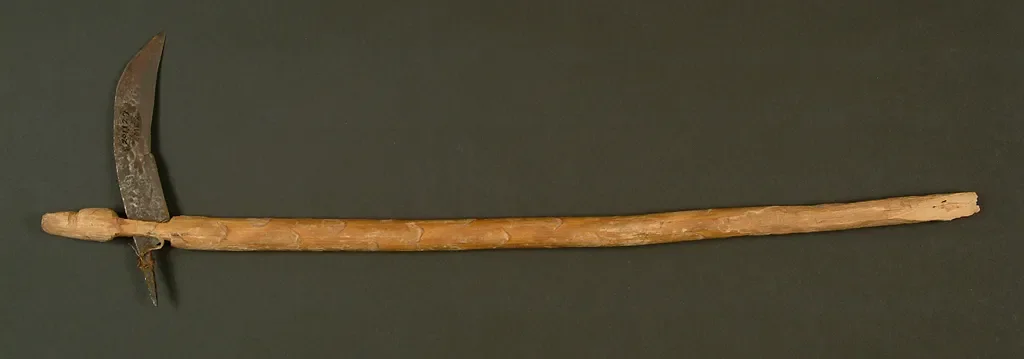Image


Knife for Gathering Tunas
Provenance: San Luis Potosi, Mexico
Accession Number: 34808
Date Acquired: 1898
Culture: Unknown
Narrative: Reaching out for Sweet Cactus Fruits

Opuntia streptacantha, a species of prickly pear cactus, grows up to fifteen feet tall and produces edible and delicious fruits known as tunas, which grow from the tips of the cactus pads. Since this particular cactus produces sharp spines, harvesters used various tools to safely remove the prickly pears. Hand-made knives, called ganchos (which means "hook" in Spanish) were one tool employed to collect tunas. The knife blade is made of steel and the handle made from the flower stalk of Sotol (Dasylirion sp.), whose leaves are also used to make fibers.
Catching Tuna
After cutting the fruit from the plant with the knife and letting the severed portion drop to the ground, the harvester held the cactus pad in place with his or her foot, scraped the glochids (fine, downy spines) from the fruit, and twisted the fruit off by hand. Cutting the pad does not damage the plant and actually stimulates growth. In fact, two pads will grow from the cut (Anderson, 2005:141).
An Important Agricultural Product
Tunas are extremely abundant in the Mexican state of San Luis Potosi and even today, tunas remain an important agricultural crop in Mexico. They are consumed in the home and sold in markets. Tuna cardona, shown here, is one of the most important of the various species known as Tuna and is harvested from June to the end of October.
Palmer's Collection
Palmer's trip to San Luis Potosi in 1898 continued his life-long interest in economic plants. He described his observations in a West American Scientist article: "Opuntia Fruit as an Article of Food" and, fascinated by the importance of plants to Mexican culture, Palmer sought out other Mexican plant species that could be cultivated in the United States.
Incomplete sets of Palmer's field notes from 1898 are at Harvard University's Gray Herbarium and National Anthropological Archives, Smithsonian Institution.